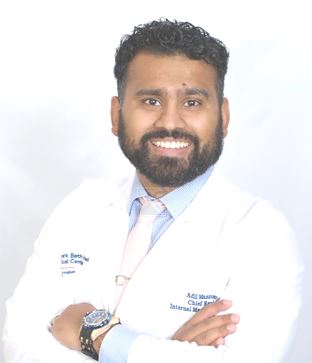THE DOCTOR IS IN

OP / ED BY DR. ADIL MANZOOR
In the United States today, more than 85% of children diagnosed with cancer will live for more than five years after their diagnosis. This statistic is impressive for a lot of reasons, most importantly because it represents a snapshot of the progress humanity has made in the fight against cancer. For context, in the 1970s, that figure stood at 60%. Yeah, modern medicine really deserves a round of applause.
However, it’s not all rosy. One of the most difficult parts of managing cancer is the side effects that accompany the treatment techniques utilized. It’s this simple – cancer treatment has become more advanced, and the therapeutic interventions employed nowadays can easily kill cancerous cells; however, these interventions don’t just stop at cancer cells, they kill human cells too. This is a major problem, as you can imagine, and there have been years of continued research to find a therapeutic technique that is both effective and very safe.
Right now, though, such techniques aren’t available to the public. This means cancer patients still have to battle with some side effects, and they know this. What many don’t know, however, is that there may be side effects that only surface or become a serious threat years after getting cancer treatment. In fact, many of these individuals will have already recovered fully before these side effects gain prominence. This is the case with childhood cancer survivors.
Before I delve into the specifics of these late effects, it is important to address why they occur at all. So, why?
Well, there are multiple factors that influence the tendency of a childhood cancer survivor having these late side effects. They include the type of cancer, the treatment technique used and its intensity or dose, genetics, age of treatment, and body part exposed to the treatment. While we are aware of these factors, there is no telling the exact extent of their impact.
For instance, two individuals may have the same type of cancer, be treated in the same clinic and even under identical conditions and methods but still have different side effects. Essentially, this makes it difficult for professionals to predict and manage these effects. Still, scientists have managed to identify individuals who are at the most risk – those who were treated with very high radiation doses and those that had hematopoietic stem cell transplantation.
Now to the effects themselves, there are quite a few. The more frequent late effects are mental problems, particularly depression and anxiety; additional cancers which are different from their original diagnosis; growth and hormone (particularly endocrine) problems; cognitive impairment; and muscle and bone, even including the spinal cord, problems. Other late effects that may follow childhood cancer recovery include cardiovascular disorders, lung problems, dental issues, gastrointestinal problems, and sensory (hearing and seeing) problems.
Again, these effects are variable and unpredictable, and this applies to their severity too. Research reveals that up to one-third of childhood cancer survivors will experience potentially fatal chronic health difficulties. For the remainder of survivors with late effects, they report that their quality of their life is greatly reduced and many cannot even work due to their various health problems. Studies even show that the fear of their cancer recurring is one of the major emotional problems that plague many survivors with late effects. I can’t blame them.
The implication of late side effects is not only on the health of the survivors but also on people around them. That just makes sense when you consider it, as their close relatives will directly or indirectly be impacted by the health and economic conditions that the survivors go through. This may even also lead to depression and anxiety among family and friends, and even more so for those that were present when the cancer survivor still had cancer.
If health professionals cannot accurately predict these effects, what then is the solution, you ask? Considering the several studies on this subject, the way forward is lifelong care. Of course, after recovering from cancer, you wouldn’t expect further cancer treatment – no, absolutely not. What I (and other scientists) mean is that supportive care, regular checks, and proper counseling are essential in ensuring that any late effects that may arise are quickly identified and resolved.
Spending months and years fighting cancer and then recovering only to have life-threatening side effects later in life is just sad and unfair, but that’s life. It is up to individuals who had cancer as kids and their relatives to take proper steps to ensure nothing comes off the late effects.
This article was written by Dr. Adil Manzoor, DO, a Board-Certified Internist & Board Certified Pediatrician who works as a Hospitalist and Emergency Room Physician. He is also the current President of Garden State Street Medicine, a non-profit organization whose sole purpose is to provide free preventive and acute urgent care services for the homeless.
He is also the co-founder of his own unique medical practice, Mobile Medicine NJ & House Call Doctors. He is also currently pursuing an Executive MBA and a Master’s of Science in Healthcare Leadership at Samuel Curtis Johnson Graduate School of Management and the Weill Cornell Graduate School of Medical Sciences.
References
- https://www.washingtonpost.com/wellness/2023/10/08/childhood-cancer-survivors-risks-depression/
- https://www.ncbi.nlm.nih.gov/pmc/articles/PMC2913863/
- https://www.cancer.net/navigating-cancer-care/children/what-are-late-effects-childhood-cancer

